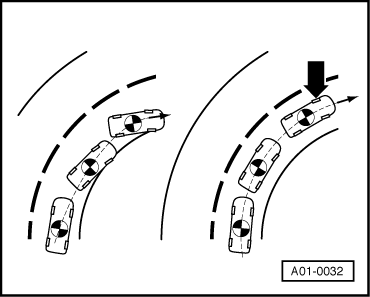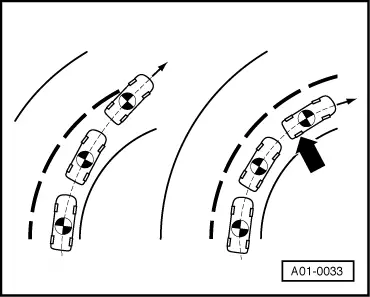| ESP - Electronic Stabilisation Program |
| The ESP is based on the existing on-board safety systems ABS/EDL and ABS/EDL/TCS, with a number of additional capabilities. ESP enhances the degree of control in critical dynamic conditions. In addition to the existing safety systems, ESP further reduces the risk of skidding and improves steerability. |

Caution | However, ESP is not able to overcome the physical limits of the available road adhesion. |
|
| t
| The ESP stabilises the vehicle when an oversteering or understeering condition occurs. The functions of EBPD, ABS, EDL and TCS are incorporated in the control system. However, the characteristic function of the ESP is controlled brake application at individual wheels. |
| t
| The ESP function relies on an exchange of signals between the ABS with EDL control unit -J104- and the engine control unit, the steering angle sender -G85- and the automatic gearbox control unit -J217- or the four-wheel drive control unit -J492- (if fitted). The data is transmitted via CAN bus → Chapter. |
| t
| If required, the TCS and ESP functions can be switched off and then on again by means of the push-button switch on the left or right of the switch for the hazard warning lights. The control unit ignores the position of the ESP switch when the driver presses the brake pedal. ESP will remain active at all times during braking. Both functions, TCS and ESP, will be activated again automatically the next time the ignition is switched on. |
| t
| When the TCS and ESP functions are deactivated, the traction control system warning lamp -K86- in the instrument cluster lights up. The warning lamp flashes at a rate of three times per second when the control function is actually working. |
|
|
|



